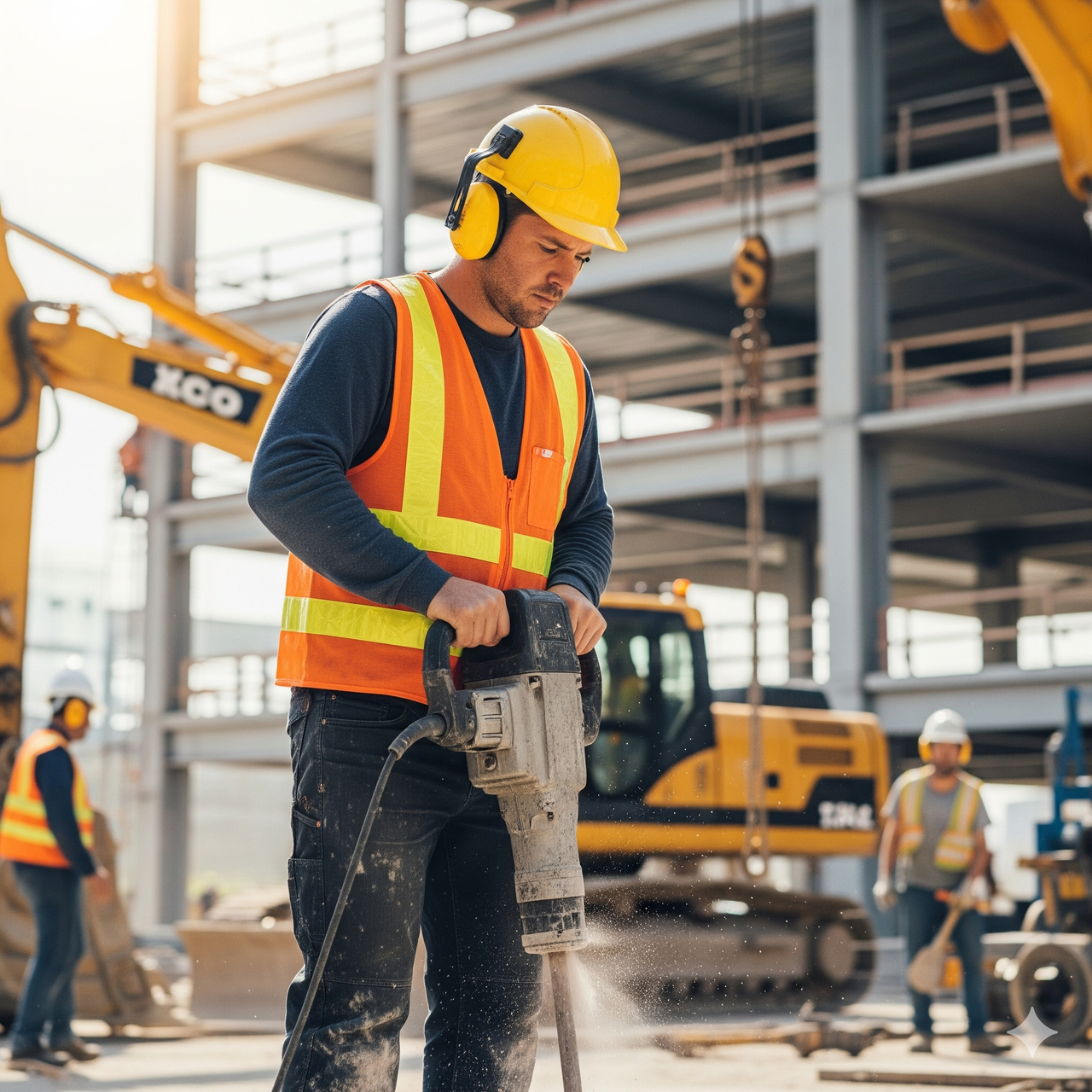OSHA Hearing Protection Rules: Protecting Workers from Noise Hazards
Posted by Darman Distributors on Sep 15th 2025
Excessive noise in the workplace can cause long-term hearing damage and affect employee focus and efficiency. To safeguard employees, OSHA sets clear regulations for hearing safety. These rules explain when and how workers should use noise-cancelling headphones to protect against noise in different types of workplaces.
Employers who want to keep their workplaces safe and productive must understand, and adhere to OSHA hearing protection rules & guidelines. Wearing the right hearing protection can keep you from losing your hearing permanently and improve your general health at work.
Understanding OSHA Hearing Protection Standards
OSHA requires that workers who are exposed to 85 decibels or more of noise for eight hours must have access to protective gear. This level of noise includes both constant, and intermittent noise that could hurt hearing.
Rules focus on hearing safety through several key measures:
- Noise Monitoring: Employers need to check noise levels to see if any safety steps need to be taken.
- Provision of Protective Gear: Earplugs, earmuffs, or custom-fitted devices must be provided when exposure exceeds the allowable limit.
- Employee Training: Workers should understand how to wear, and maintain hearing protection devices effectively.
- Record Keeping: Employers must keep records of noise exposure assessments, and the safety steps they take.
These steps assure compliance, while reducing the risk of occupational hearing loss.
Types of Hearing Protection
Different environments require different forms of osha hearing protection. Selecting the right type depends on noise intensity, work conditions, and comfort for long-term use.
Earplugs
A earplug is a small device that fits directly into the ear canal. They are cheap, light, and great for places where noise is constant but not too loud. You can choose between disposable, and reusable choices.
Earmuffs
Earmuffs protect the whole ear and block out more noise, so they can be used in places where loud noises happen from time to time. Putting them on and taking them off is easy, and you can wear hats or other safety gear with them.
Custom-Fit Protection
Custom-fitted earplugs are the best way to protect workers who are exposed to very loud noise levels. These are custom-fitted to each person's ear so they are comfortable and work well.
Getting the right hearing protection for workers keeps them safe and lets them communicate, and do their jobs without any problems. Hearing loss or tinnitus can be prevented by using these device correctly.
Noise Exposure in Different Industries
Certain industries carry higher risks for noise-induced hearing damage. Noise levels that are too high are common in industries like manufacturing, construction, and aviation.
- Construction Sites: Hearing protection is always important because heavy machinery, power tools and equipment produce high decibel levels.
- Manufacturing Plants: Production lines, stamping machines, and compressors produce continuous noise that can damage hearing over time.
- Aviation and Transportation: Every day ground crews, airport workers, and car drivers have to deal with loud engines, and other equipment.
For these industries, hearing safety programs are critical. Employers must monitor noise and ensure that all workers use adequate osha hearing protection devices consistently.
Training and Compliance
Providing hearing protection is only effective if employees know how to use it properly. OSHA requires that training programs cover:
- Correct fitting of earplugs, and hearing protection earmuffs
- Maintenance and hygiene practices for protective equipment
- Awareness of noise levels and the risks of prolonged exposure
- Procedures for reporting issues with hearing protection
Training reinforces hearing safety and makes sure that workers know why they need to protect against noise risks. When workers know what the safety rules are, they are more likely to follow them, which lowers the risk of injuries and health problems at workplace.
Benefits Beyond Hearing Protection
Implementing OSHA-compliant hearing protection programs offers benefits beyond safeguarding hearing. When employees aren't distracted by loud noise, they can stay focused, and work efficiently, which makes the workplace safer and more productive.
When workers think that their employer prioritises safety. They are more engaged, and confident in their work. A culture of safety promotes initiative, minimises errors, and promotes teamwork.
Maintaining and Updating Protective Gear
Hearing protection must be checked regularly, and changed as needed in order to keep working properly. Over time, earplugs and earmuff padding can become less comfortable, and effective at blocking out noise. Employers must schedule routine checks and provide replacements as needed.
By doing so, organizations ensure ongoing compliance with osha hearing protection rules and reinforce a workplace culture that values hearing safety. Employees who know their equipment is reliable are better equipped to protect against noise, keeping long-term health intact.
Creating a Noise-Safe Workplace
Protecting workers from noise hazards is a continuous process. Monitoring noise levels, providing the right osha hearing protection, conducting regular training and maintaining equipment all contribute to effective ear protection safety.
Prioritising these practices helps workers stay compliant, lowers the risk of hearing damage, and improves their overall health. Investing in workplace hearing protection assures that workers can be confident, safe and productive, even in noisy places.

